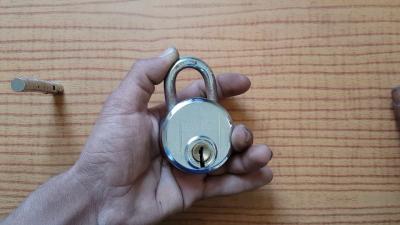iTunes has been a cornerstone of Apple's ecosystem, offering users a seamless way to manage their media and content. For iPhone users, iTunes is more than just a music library; it’s a comprehensive tool that allows you to sync, transfer, and manage everything from songs to apps. Whether you’re looking to back up your device or organize your favorite playlists, understanding how to use iTunes effectively can enhance your iPhone experience. In this section, we’ll explore the key features of iTunes on your iPhone and how it integrates with your device to provide a smooth user experience.
Setting Up iTunes on Your Computer
To get started with iTunes on your iPhone, you first need to set it up on your computer. Here’s a step-by-step guide to ensure everything runs smoothly:
- Download iTunes: If you haven't already installed iTunes, go to the Apple website and download the latest version. It's available for both Mac and Windows users.
- Install iTunes: Follow the installation prompts. Make sure to allow any necessary permissions for the software to run properly.
- Open iTunes: Once installed, open the application. You’ll be greeted by a user-friendly interface showcasing your media library.
- Sign In with Your Apple ID: To access your purchased content and utilize iCloud features, sign in with your Apple ID. If you don’t have one, you can create it within iTunes.
- Connect Your iPhone: Use a USB cable to connect your iPhone to your computer. Your device should appear in the upper-left corner of the iTunes window.
- Trust This Computer: When prompted on your iPhone, select “Trust” to allow iTunes to communicate with your device securely.
- Syncing Preferences: Navigate to your device's summary page in iTunes, where you can customize your syncing preferences for music, photos, apps, and more.
By following these steps, you’ll have iTunes set up and ready to go on your computer. This will pave the way for effortless syncing and management of your content on your iPhone.
Connecting Your iPhone to iTunes
Getting started with iTunes on your iPhone begins with a straightforward connection process. Whether you’re using a Windows PC or a Mac, the steps are similar, and I'll walk you through them.
First, make sure you have the latest version of iTunes installed on your computer. If not, update it to avoid any compatibility issues. Once that's done, follow these simple steps:
- Use a USB Cable: Grab your iPhone's USB cable and plug one end into your iPhone and the other into your computer.
- Open iTunes: If it doesn’t launch automatically, open iTunes manually. You should see your device icon appear in the top-left corner of the iTunes window.
- Trust This Computer: On your iPhone, a prompt will ask if you want to trust this computer. Tap "Trust," and you may need to enter your passcode.
- Access Device Info: Click on the device icon in iTunes to see all the options available for syncing and managing your content.
And just like that, you’re connected! If you want to sync wirelessly, ensure both your iPhone and computer are on the same Wi-Fi network, and check the “Sync with this iPhone over Wi-Fi” option in iTunes.
Syncing Music and Playlists
Now that your iPhone is connected to iTunes, let’s dive into syncing music and playlists. This process is seamless and allows you to keep your favorite tunes at your fingertips.
Here’s how to sync your music:
- Select Your Device: Click on the device icon in iTunes.
- Navigate to Music: In the left sidebar, click on "Music." You’ll see options to sync music.
- Choose Your Sync Options: You can select to sync your entire library or specific playlists, artists, albums, or genres. Just check the boxes according to your preference.
- Apply Changes: Don’t forget to hit “Apply” in the bottom right corner to save your settings. iTunes will start syncing your selected music to your iPhone!
Additionally, if you’ve created some killer playlists, you can easily sync those too!
| Sync Option | Description |
|---|---|
| Entire Library | Sync all your music from iTunes to your iPhone. |
| Selected Playlists | Only sync the playlists you’ve chosen. |
| Artists/Albums | Choose specific artists or albums for a more curated experience. |
And that’s all there is to it! With just a few clicks, your favorite music and playlists will be ready for you to enjoy on the go.
Transferring Photos and Videos
Transferring photos and videos between your iPhone and iTunes can be a breeze if you know the steps. This process allows you to back up your memories and free up space on your device. Let’s dive into how to do it!
To transfer photos and videos, start by connecting your iPhone to your computer using a USB cable. Open iTunes, and your device should appear in the upper-left corner. Click on the device icon, and you’ll see a summary page with various options.
Now, follow these steps:
- Click on the Photos section in the sidebar.
- Check the box next to Sync Photos.
- Select the folder or application from which you want to sync your photos and videos.
- Choose whether you want to sync all photos and albums or selected albums.
- Hit Apply in the bottom-right corner to start syncing.
Once the process is complete, your photos and videos will be transferred to your iPhone. Remember, this process will overwrite existing photos if you’re syncing from the same folder. So, make sure to back up any important files before proceeding!
Managing Apps and Backups
Managing apps and backups through iTunes is essential for keeping your iPhone organized and ensuring your data is safe. Whether you want to install new apps, update existing ones, or create backups, iTunes has got your back!
To manage your apps, connect your iPhone to your computer. Open iTunes and select your device. You’ll see the Apps tab, where you can:
- Install: Drag apps from the iTunes Store onto your device.
- Update: Click Update All for any available app updates.
- Delete: Select an app and hit Remove to uninstall.
Now, let’s talk about backups. Creating a backup is crucial for protecting your data. To back up your iPhone, do the following:
- With your device selected in iTunes, go to the Summary tab.
- Under Backups, select This Computer to store the backup locally.
- Click Back Up Now to start the process.
And voilà! You’ve successfully managed your apps and created a backup. Regular backups will save you from potential headaches in case you lose your data or need to restore your device.
Troubleshooting Common iTunes Issues
Encountering issues while using iTunes on your iPhone can be frustrating, but don't worry! Here are some common problems and how to resolve them:
- iTunes Won't Open: If iTunes refuses to launch, try restarting your computer or updating to the latest version. Sometimes, a simple reboot can do wonders!
- Syncing Errors: Sync issues can arise for various reasons. Ensure your USB cable is functioning properly and try a different port. If the problem persists, check for software updates for both iTunes and your iPhone.
- Content Not Transferring: If you've selected content to sync but it's not transferring, go into the iTunes settings and ensure the appropriate boxes are checked for the content types (like music, movies, etc.).
- iTunes Store Issues: If you're having trouble accessing the iTunes Store, check your internet connection. Sometimes, the store may also be down for maintenance.
- Backup Failures: Backup processes may fail if your iPhone is low on storage or if iTunes needs an update. Make sure your device has enough space, and try backing up again.
If you encounter persistent issues, consider reaching out to Apple Support or checking their online forums for more specific solutions. Your iTunes experience should be smooth and enjoyable, so don’t hesitate to seek help when needed!
Conclusion and Best Practices
Using iTunes on your iPhone to sync, transfer, and manage content can significantly enhance your digital experience. Here are some best practices to ensure you get the most out of iTunes:
- Regular Updates: Keep both iTunes and your iPhone updated. This not only improves performance but also ensures you have the latest features and security enhancements.
- Backup Frequently: Make it a habit to back up your iPhone regularly. Utilize the automatic backup feature or set up a schedule to ensure your data is safe.
- Organize Your Library: Maintain a tidy iTunes library by regularly updating playlists and removing duplicates. This makes navigation easier and enhances your listening experience.
- Use iTunes Match or Apple Music: Consider subscribing to iTunes Match or Apple Music for seamless access to your music library across devices without the need for manual syncing.
- Explore Advanced Features: Take the time to explore features like Home Sharing, which allows you to share your media library across devices in your home.
By following these best practices, you can streamline your iTunes experience, making it a powerful tool for managing your digital content effortlessly!










